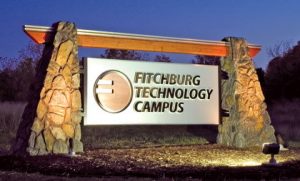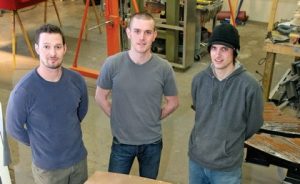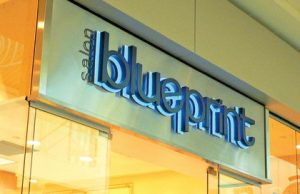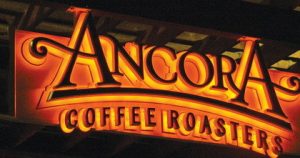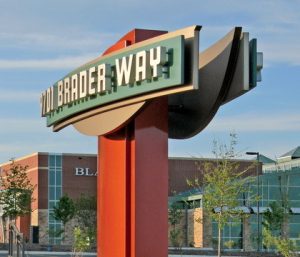Metal Fabrication
On, Wisconsin!
Newcomer Sign Art Studio aggressively seeks a market niche.
Published
16 years agoon
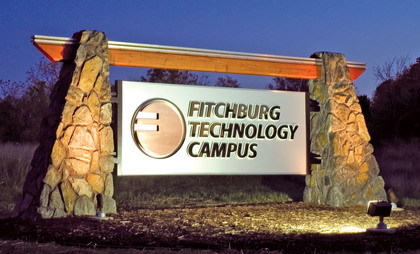
The average person on the street unfortunately envisions a signmaker as a 50- or 60-something man with a cranky disposition and a flagrant disregard for deadlines. Industry members dismiss this stereotype, but it accurately portrays many, graying sign professionals. As the United States increasingly shifts from a manufacturing to service-based economy, opportunities for young, aspiring artisans to learn the traditional craft have dwindled.
Consequently, it’s refreshing to discover a young craftsman who’s embraced the sign industry and brings a fresh perspective into the field. Dan Yoder, proprietor of Sign Art Studio (Mt. Horeb, WI), began working in a signshop shortly after having graduated from high school. Now, at age 28, he operates a growing signshop that he hopes will redefine environmental graphics in his home burg.
The right decision
At 19, Yoder joined Vital Signs, a Verona, WI signshop that specialized in such traditional sign arts as gilding and pinstriping. Though he’d always possessed an interest in art, as well as the hotrod culture, Yoder had never seriously considered the sign industry.
“For the first couple of years, I merely thought of it as a job, rather than a career,” Yoder said. “That changed when I attended my first International Letterhead Meet, the Midcoast Brothers of the Brush in Omaha. I was inspired to seriously pursue sign-design and fabrication possibilities.”
AdvertisementWith this inspiration, Yoder delved into the craft’s fundamentals. Yoder credits Vital Signs owner Mike Chamberlain and manager Mark Kramer for patiently abiding his growing pains and allowing him to develop his gilding and pinstriping skills, among others.
After six-plus years working for Chamberlain, Yoder acknowledged his desire for self-employment. Initially, he established a custom-furniture business with his father, but, after several months, they realized their wares were too expensive for their market and ceased operations.
Thus, Yoder faced a crossroads – he’d been offered a job handling graphic design for Peterbilt, the Denton, TX-based, truck-manufacturing giant, but his entrepreneurial desires prevailed. He said, “I would’ve been financially secure with the Peterbilt job and stayed there a long time, but I couldn’t ignore my inner drive to be my own boss.”
Building his brand
Yoder embarked on his career as Sign Art Studio’s CEO in January 2006 with a mere $1,200 in the bank and a basement for a shop. Undaunted, he went door-to-door throughout Madison soliciting new business. Fortunately, viable prospects weren’t difficult to pinpoint; a poorly designed or fabricated sign above or near the front door invited his handiwork.
AdvertisementLacking the substantial startup capital for equipment, most of his initial signs entailed a computer-rendered design, a pattern printed out at his local Kinko’s, and painting, carving or cutting vinyl by hand. He produced his first sign for a formal-wear purveyor; he reinvigorated a monument-sign face with an HDU sign decorated with black smalt and goldleaf. Many of his other early-vintage signs entailed handpainting Laminators Inc. (Hatfield, PA) Alumalite® plastic-core, aluminum-sided panels with lettering enamels and latex paint.
“My initial round of pounding the pavement netted me three to four months of work to get me off the ground,” Yoder said. “With that, I was about to rent my first shop. It was only 400 sq. ft., but it got me out of working from my dad’s garage.”
A connection helped him land a job that influenced his shop’s ultimate direction. A friend’s mother managed the property of the Fitchburg (WI) Technology Campus, a 120-acre facility that houses an array of technologically oriented businesses, retail entities and residential buildings. Though this connection gave Yoder an audience, his imagination earned him a foot in the door.
“Honestly, there’s not an abundance of imaginative design in our area,” he said. “We have an overabundance of boxy cabinet signs, and many would-be clients crave something different. I think our monument-sign concept differentiated us from the competition.”
Rather than a more conventional, formed-plastic face, HDU or MDO, Yoder developed an anodized-aluminum face, which he formed from raw aluminum sheet before jobbing out the anodized finish. To complement this, Yoder and his co-fabricator, Corey Griego, reprised Fitchburg’s copper-colored logo into the text by laminating 20-gauge copper to ½-in.-thick acrylic, which they routed to form with a jigsaw. They applied an automotive clearcoat to protect the face. They also constructed the overhanging cedar support beam and the flanking stone pillars that envelop structural-steel I-beams – out of necessity.
Advertisement“We hired a masonry subcontractor, but he proved unreliable, and we had to take the task back inhouse,” he said. “It’s added another potential service to our repertoire.”
Through ingenuity and resilience, they built this 8 x 18-ft. sign within Sign Art Madison’s original, 400-sq.-ft. shop. Moreover, their Fitchburg work helped them gain visibility in their area – upgrading to a 2,200-sq.-ft. facility also didn’t hurt – and it also steered their material choices.
“Now, we fabricate most of our signfaces from aluminum,” Yoder said. “It’s versatile, durable and offers greater impact strength than HDU. We do some work with steel, but, given its expense because of the supply and demand for it in developing countries, steel usually isn’t the best option.”
Yoder still specifies HDU for certain installations, particularly when he wishes to create beveled-edge signage to create a more dramatic effect, or interior-wall signage that won’t be subjected to outdoor conditions. When a project doesn’t require UL-certified materials, he’ll also use it as a signface for internally illuminated signage.
Currently, the shop subcontracts cutting metal more than 1⁄4-in. thick to a local cabinet shop that uses a CNC router, or a waterjet-cutting outfit; for thinner metal, Yoder and Griego use a jigsaw. A 24-in., Roland DGA Corporation CAMM1 cutting plotter and three PCs round out their equipment. Yoder plans to purchase a CNC router in the near future to facilitate his metalforming needs. However, he doesn’t foresee buying an inkjet printer in the foreseeable future.
“There are numerous service providers in our area, and we’ve found one who gives us very competitive prices,” he said. “We fabricate some cut-vinyl, vehicle graphics, but we really don’t have much interest in entering the wrap market. We’re happy with our niche.”
The creative process
Moving somewhat against the current, Yoder uses Adobe® Illustrator® almost exclusively. He said, “Some people may think I’m nuts for not using a program with 3-D functionality, but I’ve found that it gives me more design and color options more efficiently than other programs. Unless we’re working under very strict specs, I’m able to scale renderings out to actual size without any problems.”
For some more complex, 3-D creations, Yoder incorporates Revit®, an architectural/structural engineering program that offers intricate, 360° renderings. When a client requests a 3-D model, he’ll job out its creation to an architectural firm that uses Sketch-It®.
Madison, a thriving college town (the University of Wisconsin) with, according to 2006 estimates, nearly 225,000 residents, implements a group called the Urban Design Commission (UDC) to approve plans for new signage and environmental graphics.
Yoder said, “Like me, UDC members are tired of strip malls with nothing but red channels or white-faced cabinet signs,” he said. “Madison is a progressive city, and they want to see innovative design that reflects a forward thinking.”
Looking ahead
Although the lagging housing market has dampened prospects for residential-development signage, Yoder said multi-tenant, mixed-use developments and retail properties have remained steady. He said, “I’m looking at about 40 work orders at the moment, so things have remained steady.”
In November, Sign Art Studio earned a UL listing, which enabled it to increase its electric-sign repertoire. Edgelit, LED signs represent a growing trend in his market, and Yoder enjoys the engineering challenges.
“Except for the UL sticker and the on-off switch, we want components as concealed as possible,” Yoder said. “Junction boxes, power sources and conduit aren’t welcome sights for anyone.”
He’s added a third employee, vinyl fabricator Cliff Macho, but admits he needs to increase staff as he tackles designing signage for a large Madison mall, and wayfinding and environmental graphics for a Chicago commercial development. He said, “In addition to a few more fabricators, it would be very helpful to hire a designer to help conceptualize these plans. I would continue to create the initial concept designs, but I need to be out meeting prospective clients. I’ve reached the point where I need to delegate.”
Despite his youth, Yoder adopts an old-school approach to meeting customers – face-to-face: “Our website can be a sales tool, but I want to be there in person to explain our capabilities. People who look in the Yellow Pages or do Google searches are often looking for a low price point. I don’t do cheap; I believe in hiring experienced, talented people, taking the time to do it right and using the best materials. In the end, you get what you pay for.”
SPONSORED VIDEO
Introducing the Sign Industry Podcast
The Sign Industry Podcast is a platform for every sign person out there — from the old-timers who bent neon and hand-lettered boats to those venturing into new technologies — we want to get their stories out for everyone to hear. Come join us and listen to stories, learn tricks or techniques, and get insights of what’s to come. We are the world’s second oldest profession. The folks who started the world’s oldest profession needed a sign.
You may like
Advertisement
Subscribe

Magazine
Get the most important news
and business ideas from Signsofthetimes Magazine.
Advertisement
Most Popular
-

 Photo Gallery2 weeks ago
Photo Gallery2 weeks ago30 Snapshots of the 2024 ISA Sign Expo
-

 Ask Signs of the Times2 weeks ago
Ask Signs of the Times2 weeks agoWhy Are Signs from Canva so Overloaded and Similar?
-

 Paula Fargo1 week ago
Paula Fargo1 week ago5 Reasons to Sell a Sign Company Plus 6 Options
-

 Real Deal5 days ago
Real Deal5 days agoA Woman Sign Company Owner Confronts a Sexist Wholesaler
-

 Photo Gallery1 week ago
Photo Gallery1 week ago21 Larry Albright Plasma Globes, Crackle Tubes and More
-

 Women in Signs2 weeks ago
Women in Signs2 weeks ago2024 Women in Signs: Brandi Pulliam Blanton
-

 Women in Signs2 weeks ago
Women in Signs2 weeks ago2024 Women in Signs: Alicia Brothers
-

 Projects5 days ago
Projects5 days agoGraphics Turn an Eyesore Cooler Into a Showpiece Promo in Historic Plaza

